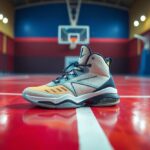Your cart is currently empty!
Category: Running Techniques
-

Biomechanical Efficiency in Runners’ Advanced Footwear

Delve into the revolutionary innovations in running footwear technology that have significantly reshaped the performance optimization landscape for endurance athletes. These advancements are not just about aesthetics; they represent a comprehensive approach to enhancing your athletic performance.
The optimization of performance in endurance running has undergone a dramatic transformation through the introduction of advanced footwear technology. This surge in innovation provides you with extraordinary opportunities to boost your athletic capabilities. By exploring state-of-the-art shoe designs, you will learn how they can effectively lower your metabolic expenditure and enhance your running economy. With features like carbon fiber plates and pioneering midsole materials, these shoes offer exceptional energy return mechanisms that may reduce your oxygen consumption by as much as 4%. Regardless of whether you are a seasoned professional or an enthusiastic amateur, grasping these biomechanical advancements will empower you to make informed choices regarding your running equipment, ultimately enhancing your race performance.
 Continue reading to explore the intricate mechanics of running footwear designed to elevate your performance:
Continue reading to explore the intricate mechanics of running footwear designed to elevate your performance:Unlocking the Secrets of Energy Return Mechanisms in Advanced Running Shoes
The technology behind advanced running shoes utilizes complex biomechanical principles that fundamentally change how energy is transferred during movement. Through innovative design elements, these shoes collaborate to reduce metabolic expenditure, thereby creating an intricate system that enhances running efficiency through meticulous material engineering and geometric configurations. By concentrating on the mechanics of energy return, these shoes provide runners a tangible benefit in both performance and stamina, enabling longer runs with minimized fatigue and improved overall endurance.
Delving into the Curvature Dynamics of Carbon Fiber Plates
Carbon fiber plates utilize precise geometric engineering to redirect kinetic energy throughout the running motion. The optimal curvature angles, ranging from 12° to 15°, allow for maximum energy storage and return, with finite element modeling showing energy return efficiencies of up to 93% in prototype designs. These engineered plates function like springs, significantly reducing muscular exertion during the toe-off phases, which enables runners to conserve energy over extended distances, thereby enhancing both endurance and overall performance.
Evaluating TPU vs. EVA in Midsole Innovations for Optimal Performance
The choice of material plays a critical role in the performance of running shoes, with thermoplastic polyurethane (TPU) emerging as a leading midsole technology. Comparative analyses highlight TPU’s superior qualities in energy return and impact absorption, which afford runners enhanced biomechanical efficiency across diverse running conditions. Selecting between TPU and EVA foam becomes essential for athletes aiming to optimize performance while minimizing injury risks during both training and competitive events.
Performance Metrics: TPU vs. EVA
Energy Return 18% higher in TPU Oxygen Consumption Reduction 2.4% lower with TPU A thorough exploration of midsole materials reveals intricate performance characteristics. TPU demonstrates greater durability compared to conventional EVA foam, maintaining consistent mechanical properties through thousands of compression cycles. Runners benefit from dependable energy return, diminished fatigue, and improved long-distance performance due to advancements in material science, which can have a profound effect on their training outcomes and competition success.
A Comprehensive Midsole Material Comparative Analysis
Impact Absorption TPU absorbs 37% more force Rebound Elasticity 89% maintained across 50,000 cycles 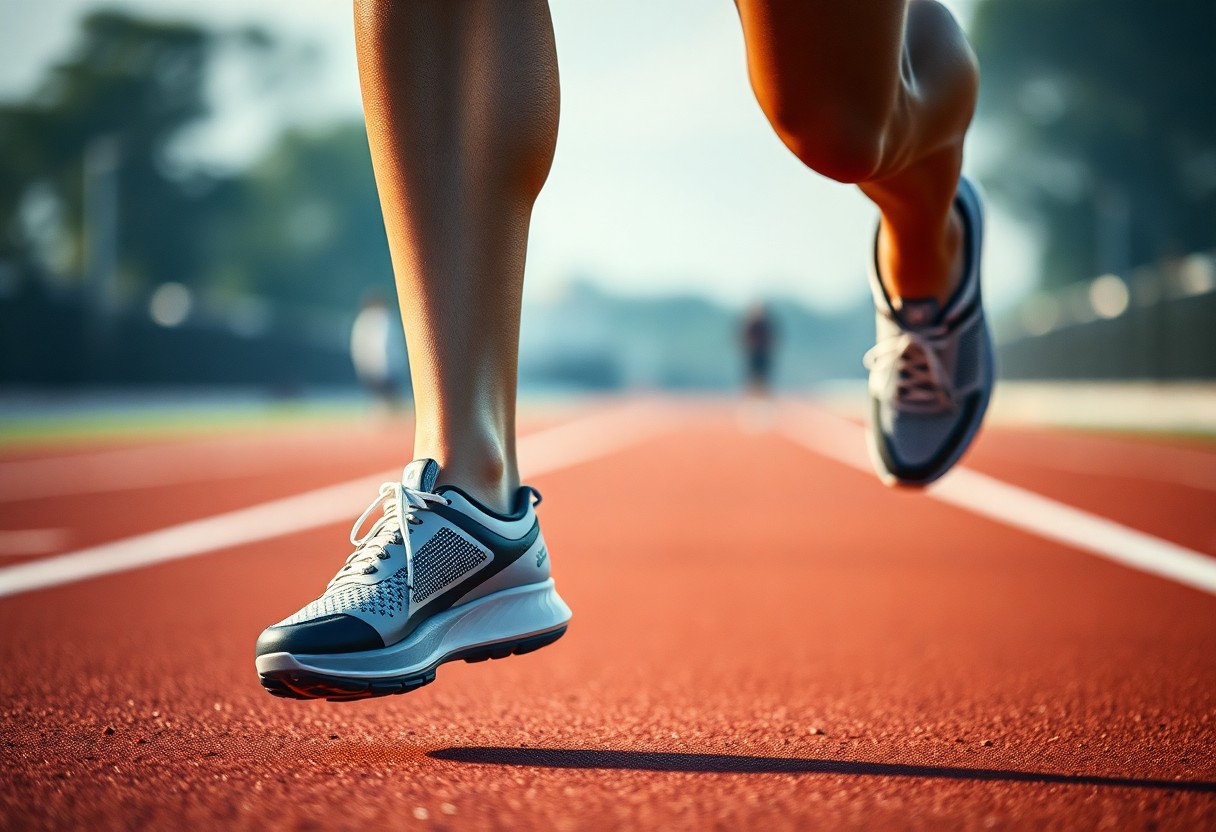 Explore further as we investigate the effects of advanced footwear technology on metabolic efficiency:
Explore further as we investigate the effects of advanced footwear technology on metabolic efficiency:Assessing Who Gains the Most from Advanced Footwear Technology in Running
The impact of advanced footwear technology on runners is not uniform. Gains in metabolic efficiency can differ significantly among various demographic groups, influenced by factors such as gender, age, and personal biomechanics. Research has identified subtle patterns of metabolic response, indicating that the advantages of super shoes extend beyond mere performance metrics to include intricate physiological adaptations that are unique to each runner’s biomechanical profile.
Investigating Gender-Specific Performance Improvements in Running
Female runners observe a 3.2% improvement in metabolic power, while males experience a 4.2% enhancement, suggesting complex neuromuscular adaptations at play. Data on pelvic kinematics indicates a 14% larger reduction in hip adduction angle for females using advanced footwear, potentially clarifying the nuanced differences in metabolic benefits across genders. Recognizing these distinctions can aid in tailoring training regimens and footwear selections to optimize performance gains for each gender.
Understanding the Age-Related Advantages in Endurance Performance
Masters athletes aged 40 and above demonstrate a 2.8% greater reduction in oxygen cost when utilizing super shoes, which may offset declines in tendon elasticity. Analysis of tibial loading reveals a cumulative 12% decrease in stress per kilometer in older runners, indicating potential benefits regarding injury prevention and maintaining performance levels. These insights underscore the vital role of advanced footwear technology in prolonging the competitive viability of older athletes.
The benefits associated with advanced footwear technology for older runners extend well beyond basic performance metrics. Biomechanical research shows that older athletes exhibit more significant adaptations due to compensatory mechanisms. Decreased tendon stiffness and modified muscle recruitment patterns interact with footwear advancements to create a unique profile for performance enhancement. Notably, the energy return mechanism of carbon plates appears to counterbalance age-related biomechanical inefficiencies, which could extend competitive running careers by alleviating the physiological challenges typically faced by aging athletes.
Continue reading to explore the implications of advanced footwear technology on injury risks:
Examining the Relationship Between Running Footwear and Injury Risk
Advanced footwear technology introduces intricate biomechanical interactions warranting a comprehensive analysis of potential injury risks. Runners must carefully weigh the balance between performance enhancements and physiological adaptability. Longitudinal studies reveal subtle yet critical shifts in muscular recruitment patterns, joint loading, and proprioceptive feedback when transitioning to high-performance running shoes, highlighting the necessity for a well-rounded approach to both training and recovery.
Injury Considerations: Evaluating the Costs of Enhanced Performance
Research indicates a 9% increase in Achilles tendon strain rates among users of super shoes during high-intensity training. Additionally, plantar pressure mapping shows a 22% increase in forefoot loading compared to traditional trainers, especially on challenging terrains such as downhill routes. These findings imply that while metabolic efficiency may improve, runners must adopt targeted strength training and adaptation strategies to mitigate potential injury risks and promote long-term athletic health.
Modifying Training Protocols for Enhanced Gait Adaptations
Adapting to the unique properties of advanced footwear necessitates strategic adjustments to your training regimen. Gait retraining becomes essential to optimize the distinctive energy return mechanisms of carbon-plated shoes. It is vital for runners to cultivate neuromuscular patterns that align with the biomechanical design of the shoes, which may lower injury risk while maximizing performance gains.
Comprehensive gait adaptation strategies involve various methods to integrate advanced footwear technology effectively. Biomechanical studies suggest that runners typically require approximately 6-8 weeks of progressive training to fully adjust to the specific mechanical attributes of super shoes. This adaptation phase includes targeted eccentric strengthening exercises, modified interval training approaches, and meticulous monitoring of lower limb biomechanics. Both professional athletes and serious runners can greatly benefit from regular 3D gait analysis to observe subtle changes in their movement patterns, ensuring optimal integration of advanced footwear technology with their individual biomechanical characteristics.
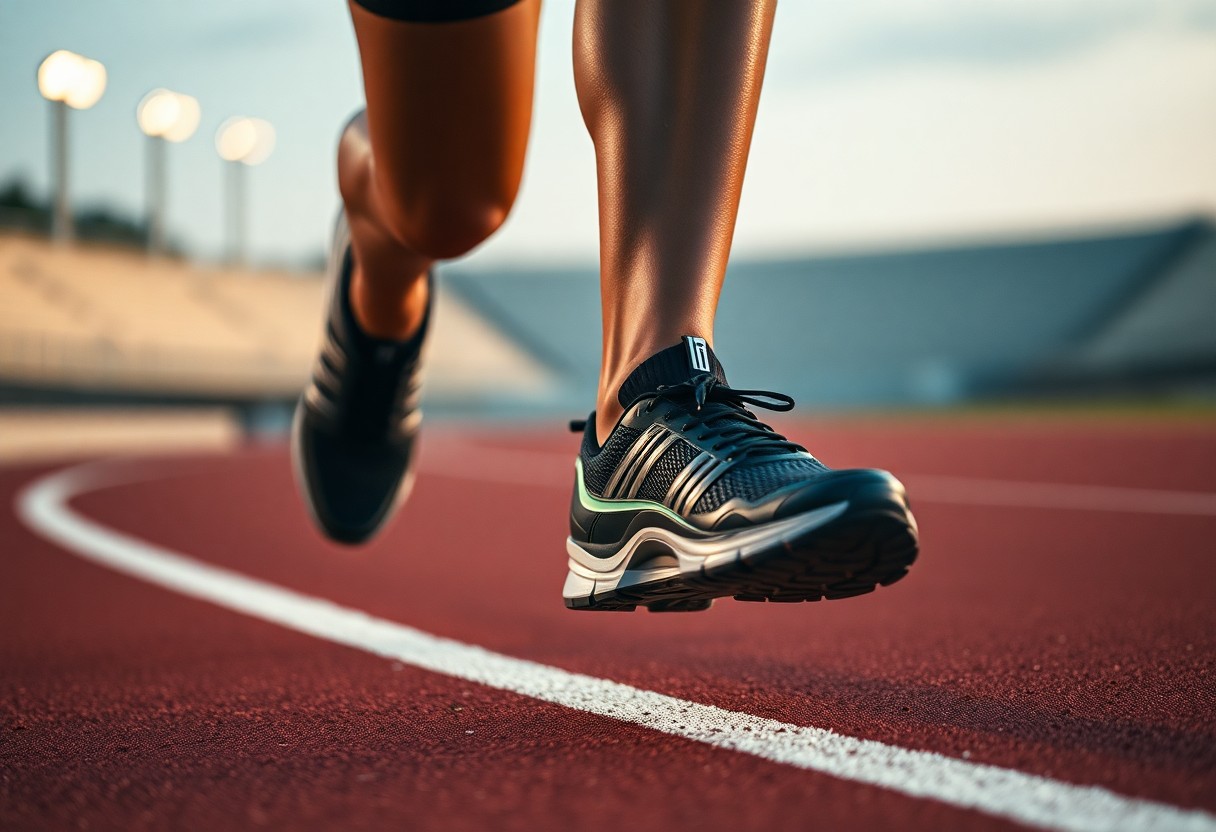 Explore the future of footwear technology and its implications for runners:
Explore the future of footwear technology and its implications for runners:Discovering the Next Wave of Innovations in Running Footwear Technology
Emerging advancements are set to redefine running shoe design, pushing the limits of biomechanical efficiency and performance enhancement. Cutting-edge research is focusing on personalized solutions that adapt to individual biomechanics, utilizing advanced materials, computational modeling, and integrated sensor technologies to develop a new generation of intelligent footwear tailored for elite athletes.
Transforming Footwear Design with 3D Printed Midsoles
Lattice structure optimization algorithms now facilitate precise variations in stiffness across different regions that correspond to individual foot pressure maps. Prototype testing has shown a 5.1% increase in metabolic savings compared to mass-produced models, with computational design enabling unparalleled customization of midsole geometries to enhance energy return while minimizing biomechanical stress. This cutting-edge approach guarantees that each runner can achieve peak performance suited to their unique physical attributes.
Integrating Smart Technology for Enhanced Performance Tracking
New sensor technologies are transforming running shoes into advanced performance tracking tools. Real-time ground reaction force feedback systems have the potential to reduce oxygen costs by 1.9% through minute adjustments in cadence, offering runners immediate biomechanical insights during both training and competitive scenarios. These innovations are essential for athletes striving to refine their technique and optimize performance metrics.
The integration of advanced sensor technology represents a monumental advancement in performance monitoring. Multi-axis accelerometers, pressure-sensitive matrices, and embedded microprocessors are now capable of capturing intricate biomechanical data with exceptional precision. These smart systems analyze gait mechanics, impact forces, and energy expenditure in real-time, granting runners valuable insights into their movement patterns. Machine learning algorithms are now able to forecast potential injury risks, refine training loads, and recommend personalized technique adjustments based on extensive movement analyses, effectively transforming running shoes from static tools into dynamic performance optimization assets.
Finally, gain a comprehensive understanding of the evolving landscape of advanced footwear technology in endurance running:
Welcoming the Future of Advanced Footwear Technology in Running
In summary, you have navigated the transformative landscape of advanced footwear technology in endurance running. Your insights now encompass how innovative design elements such as carbon plates and high-performance midsole materials can significantly lower metabolic costs while enhancing running efficiency. By leveraging scientific advancements, you can recognize that these shoes provide more than just marginal gains; they signify a revolutionary shift in athletic performance. Investing in such technology could lead to improved running economy, decreased energy expenditure, and optimized biomechanical responses across various athletic demographics.
The Article Biomechanical Efficiency of Advanced Footwear Technology: Metabolic Cost Reduction and Performance Enhancement in Endurance Running appeared first on My Shoes Finder.
The Article Biomechanical Efficiency in Advanced Footwear for Runners Was Found On https://limitsofstrategy.com
-

Enhance Your Running with Better Stride and Footwork
As you embark on your running journey, it’s essential to prioritize both efficiency and safety in your approach. To achieve this, concentrate on optimizing your stride and footwork. By making a few targeted adjustments to your running form, you can significantly reduce the risk of injury, enhance your overall efficiency, and make your running experience much more enjoyable. Running light is all about proper technique, and with the right strategies, you can master the art of running lighter and more efficiently, whether you’re in barefoot shoes or minimalistic footwear.
Uncover the Powerful Advantages of Adopting a Lighter Running Style
Understanding the benefits of running lighter can profoundly enhance your overall running experience. Transitioning to a lighter running style not only makes your runs more enjoyable but also significantly increases your efficiency while decreasing your chances of sustaining an injury. Embracing this technique can lead to a remarkable transformation in how you feel both during and after each run, allowing you to take on greater challenges with confidence and ease.
Enhance Your Running Efficiency by Embracing a Lighter Style
Improving your running efficiency is achievable for any athlete willing to adopt a lighter running style. This can be accomplished through simple adjustments to your form, such as focusing on landing with your midfoot or forefoot, engaging your core muscles, and increasing your cadence. These changes enable you to run with significantly less effort, conserving energy for longer distances and more intense workouts, ultimately leading to improved performance and reduced fatigue.

Significantly Reduce Your Injury Risk Through Lighter Running Techniques
Every accomplished runner employs a strategy to minimize the risk of injury, and adopting a lighter running style is a vital component of this strategy. By running lighter, you effectively diminish the impact on your joints and muscles. This method encourages you to avoid overstriding, which often leads to excessive strain on your joints and increases the likelihood of injuries. Implementing these changes can create a safer running environment for yourself.
The advantages of running lighter extend to decreasing stress on your joints, enhancing running efficiency, and boosting overall performance. Using minimalistic shoes or barefoot shoes can significantly improve your running form, ultimately lowering your injury risk. Additionally, focusing on increasing your cadence and engaging your core can further facilitate a lighter and more efficient running experience. With consistent practice and dedication, you can cultivate a lighter running style that helps you steer clear of common running injuries and reach your running aspirations.
Utilize Auditory Feedback to Enhance Your Running Form
The sound of your feet striking the ground while running offers valuable insights into your running form. If you notice thudding or slapping noises, it suggests you are “running heavy.” These auditory signals indicate areas in your technique that could benefit from improvement. By refining your form based on these auditory cues, you can eliminate these sounds and simultaneously enhance your running efficiency, making each run smoother and more enjoyable.
Identify the Key Signs of “Heavy” Running
Beyond visual cues, the sound of your feet making contact with the ground can serve as a crucial tool for identifying whether you’re running heavily. A loud thud or slapping noise may suggest that you are either overstriding or landing on your heel, both of which can escalate your risk of injury and diminish the efficiency of your runs. By tuning into the sounds your feet produce, you can make necessary adjustments to your form, effectively lowering your risk of injury and improving your overall performance.
Transform Sound into Constructive Feedback for Running Improvement
For instance, while running, you can use the sounds produced by your feet as feedback to refine your form. If you detect a loud thud, try transitioning to a midfoot or forefoot landing instead of a heel strike. This adjustment not only enhances your efficiency but also reduces impact on your joints. By leveraging the sounds of your footsteps as a guide, you can make necessary adjustments that improve your overall running experience, turning auditory feedback into a powerful tool for enhancement.
Furthermore, employing sound as feedback can lead to the development of a more efficient running technique. By paying attention to the sounds your feet make, you can pinpoint areas for improvement in your form and implement changes that decrease your risk of injury. For example, if you hear a slapping noise, consider increasing your cadence and taking quicker steps, which can enhance your running efficiency while minimizing joint impact. Additionally, utilizing minimalistic shoes or embracing barefoot running can help you cultivate a more natural running technique, leading to an overall improvement in your form. By merging these strategies, you can effectively mitigate injury risk and enrich your running experience.

Implement Proven Strategies for Optimizing Your Running Technique
If your goal is to enhance your running efficiency while minimizing injury risk, consider incorporating the following actionable tips:
- Ensure your feet land directly beneath your body
- Prioritize landing on your forefoot or midfoot
- Allow your heels to make contact with the ground
- Consciously place and lift your foot off the ground as you run
- Utilize mental cues to avoid heavy footfalls
- Maintain an engaged core throughout your run
- Increase your cadence for better efficiency
- Experiment with running barefoot or in minimalistic shoes
Keep in mind that mastering these techniques requires time and practice to fully integrate them into your routine, allowing for gradual improvement in your running performance.
Master the Essential Technique of Landing Directly Under Your Body
Landing too far in front of your body signifies overstriding, which can result in increased forces on your joints and a higher chance of injury. Instead, aim to have your feet land directly beneath your body to promote a more efficient running form that enhances stability and control.
Embrace the Forefoot or Midfoot Strikes for Optimal Efficiency
The type of footstrike you adopt is crucial for running lighter. Ideally, you should aim for a forefoot or midfoot strike rather than a heel strike, as this technique allows your legs to function as natural springs, improving shock absorption and energy return.
During the landing phase, it’s vital to concentrate on proper footstrike and body alignment. By landing with a midfoot or forefoot strike, you effectively utilize your legs as natural springs, starting from your feet. This technique reduces the impact on your joints and enhances your running efficiency. Additionally, running barefoot or in minimalistic shoes can facilitate the development of a more natural forefoot or midfoot strike as they enable your feet to move organically and rely on your muscles and tendons for stability. By emphasizing proper footstrike and body alignment, you can enhance your running efficiency, lower your injury risk, and create a more natural and efficient running experience.
Refine Your Running Technique for Enhanced Performance
Every runner has the potential to enhance their stride and footwork by implementing a few straightforward adjustments to their running form. Start by actively listening to the sound of your feet as they make contact with the ground, as this can offer invaluable feedback on your technique. A few minor modifications can lead to significant improvements in your running efficiency and injury prevention.
Allow Your Heels to Make Contact with the Ground for Enhanced Energy Return
Most runners can greatly benefit from allowing their heels to touch the ground, as this technique utilizes your Achilles tendon as a spring, providing a sense of “free energy” upon release. After landing on your midfoot or forefoot, allow your heel to drop; the comfort of this technique will depend on your terrain and pace, so be mindful of your surroundings.
Perfect Your Foot Placement and Lift for Optimal Performance
Focus on “placing” your foot gently on the ground instead of forcefully slamming it down, followed by lifting it off the ground through hip flexion. This approach encourages you to remain light on your feet while avoiding overstriding, which can lead to fatigue and injury.
To enhance your foot placement and lift, concentrate on lifting your knee or pulling your foot upward, rather than pushing your toes into the ground. This technique encourages the use of your hip flexors to lift your foot, conserving energy by minimizing reliance on your calves. By doing so, you can lower your risk of injury and improve your running efficiency. Additionally, utilizing minimalistic shoes or running barefoot can promote a more natural stride and enhance your overall running technique. Remember to attune to the sound of your feet and use it as constructive feedback to refine your technique. With consistent practice, you can cultivate a lighter, more efficient stride that enables you to run faster and farther with less exertion.

Advanced Techniques for Achieving a Lighter Running Experience
Many runners may not fully grasp the immense benefits of adopting a lighter running style. To unlock these advantages, consider the following advanced tips:
- Utilize sound as a gauge for how “light” your running is
- Ensure your feet consistently land beneath your body
Tip Benefit Focus on landing forefoot or midfoot Significantly reduces injury risk Employing Visual and Auditory Cues to Prevent Heavy Footfalls
Underlying the concept of proper running form is the critical role of cues in avoiding heavy footfalls. By visualizing yourself running on hot coals or delicate eggshells, you can cultivate a lighter stride and minimize your risk of injury effectively.
Maintain Core Engagement to Optimize Your Running Performance
Transitioning into a plopping motion while running can severely impact your form. However, by keeping your core engaged, you can maintain proper alignment. This involves gently drawing your belly button toward your spine in a controlled manner, a practice that should feel natural and sustainable throughout your run. By doing this, you’ll improve your ability to maintain a consistent pace and reduce common running injuries that often arise from poor form. When utilizing minimalistic shoes or barefoot shoes, you can further refine your technique and lower your risk of injury, ensuring a smooth running experience.
Maximize Your Cadence and Footwear Choices for Peak Running Performance
While proper running form is undeniably crucial, many runners frequently overlook the significance of cadence and footwear choices. By optimizing these elements, you can enhance your running efficiency and diminish your injury risk significantly.
Elevate Your Cadence for Enhanced Running Efficiency
At the core of effective running lies the importance of a well-adjusted cadence. You can elevate your running performance by increasing your steps per minute, which facilitates a lighter footfall and helps to prevent overstriding, ultimately allowing for a smoother and more controlled run.
Experience the Unique Benefits of Barefoot or Minimalist Shoes
For those seeking a more organic running experience, consider running barefoot or in minimalist shoes. This approach not only enhances your technique but also strengthens your feet and legs by simulating the sensation of running without shoes, promoting natural movement.
With minimalist shoes, you can enjoy the perks of barefoot running while still providing essential protection for your feet. Barefoot shoes feature a wider toe box, a non-elevated heel, and lightweight construction, allowing your muscles, ligaments, and tendons to function as natural shock absorbers and springs. By running in minimalist shoes or barefoot, you can effectively enhance your posture and balance, reduce your risk of injury, and improve your overall running efficiency. As you continue to run in barefoot shoes, you’ll witness a gradual strengthening of your feet and legs, enabling you to run more efficiently and effectively.
Transform Your Running Experience by Implementing Key Takeaways
By following simple yet effective guidelines, you can significantly enhance your running stride and footwork. Ensuring that your feet land beneath your body, opting for a forefoot or midfoot landing, and allowing your heels to touch the ground can lead to a lighter and more efficient running experience. Embracing barefoot shoes or minimalistic shoes can further assist in achieving an optimal running form. By implementing these practical tips, you will significantly reduce your injury risk while making running a more enjoyable and fulfilling activity, paving the way for a successful running journey.
The Article Running Light: Tips to Improve Your Stride and Footwork appeared first on My Shoes Finder
-
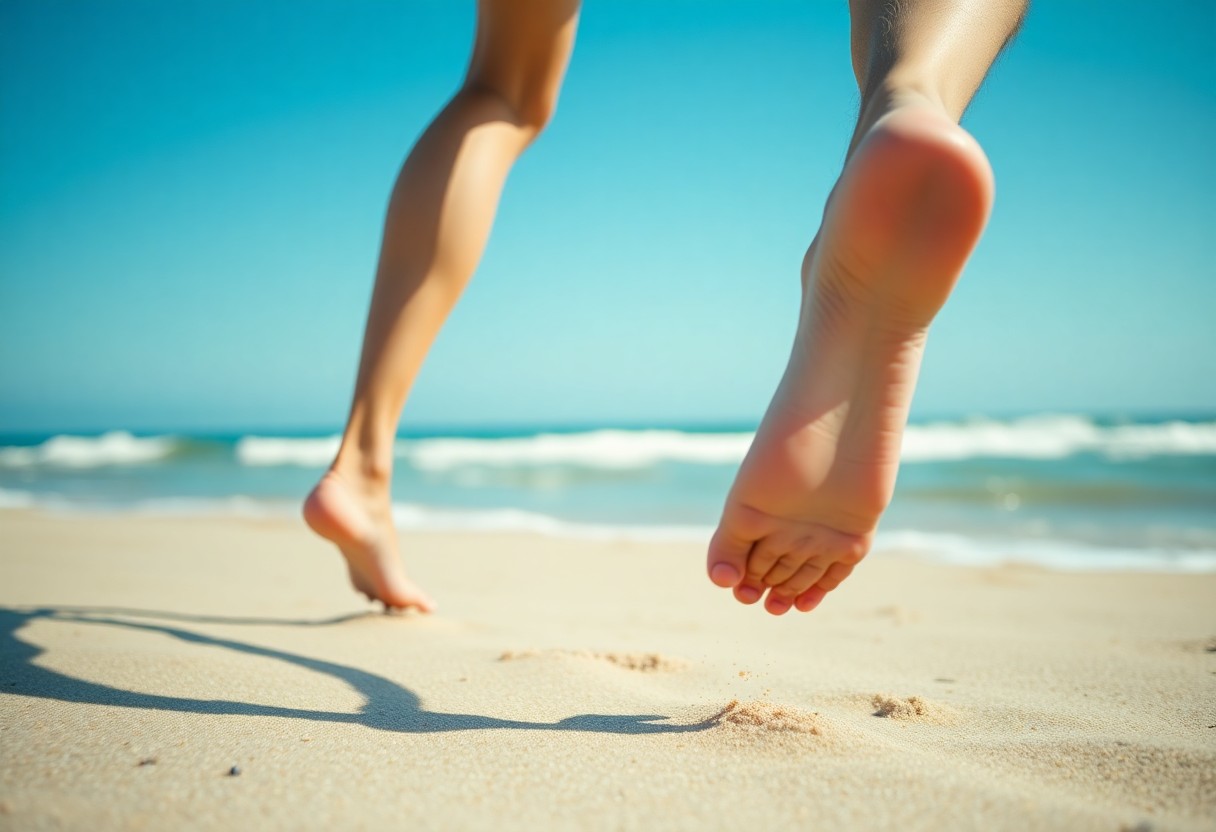
Barefoot Running Benefits: Why You Should Give It a Go
When planning your next run, explore the groundbreaking concept of barefoot running. This forward-thinking approach not only aids in strengthening your feet and improving your overall posture, but it also significantly reduces the likelihood of common running injuries. By embracing a barefoot technique, you allow your toes to spread freely, fostering a more natural gait and achieving an optimal footstrike. This organic movement enhances your running efficiency and enjoyment, making each run a more rewarding experience.
Uncover the Life-Changing Advantages of Switching to Barefoot Running
Before diving into barefoot running, it’s crucial to understand the extensive benefits it provides. Adopting this style promotes the development of stronger feet and ankles, improves your posture and balance, and substantially decreases your chances of sustaining injuries. Running without shoes allows you to adopt a more natural running form, which elevates your overall running efficiency and enjoyment. By shifting towards barefoot running, you engage more muscles and enhance your connection with the ground, leading to a transformative experience.
Discover How Running Barefoot Can Build Stronger Feet
Contrary to the prevalent belief that shoes are a necessity for support, running barefoot can actually strengthen your feet and ankles significantly. When you run without the restrictions of shoes, the muscles in your feet and legs become more engaged, which enhances strength and stability. This natural engagement promotes improvements in balance and posture, ultimately reducing your risk of injuries while enhancing your overall running performance. A stronger foundation leads to a more confident and enjoyable running experience.
Embrace the Freedom of Natural Toe Splay While Running Barefoot
As you begin your journey into barefoot running, it’s essential to acknowledge the importance of toe splay. Running without shoes allows your toes to spread naturally, which significantly improves your balance and stability. This natural positioning minimizes the risk of injuries while further enhancing your overall running performance. When your toes can function without restriction, they help in stabilizing your movements, allowing for a more fluid running experience.
So, what benefits arise when your toes are free to splay naturally during barefoot running? This freedom enhances your balance and stability, enabling your feet to function as intended. The outcome is a decreased risk of injuries and an overall boost in running performance. Embracing barefoot running introduces an exhilarating sense of freedom and natural movement as your toes operate in their most natural state, enhancing both comfort and effectiveness in your runs.

Enhance Your Running Form for Superior Performance
Every runner can benefit from refining their form, and barefoot running is a remarkable way to achieve this. By removing traditional shoes, you strengthen your feet, ankles, and calves, while also improving your posture and balance. These modifications collectively work to decrease your risk of injury and transform you into a more efficient runner. With a more aligned body and better mechanics, you can enjoy longer and more productive runs.
Improve Your Footstrike by Embracing Barefoot Running
Running barefoot provides you with superior control over your foot placement, allowing you to land softly on your forefoot or midfoot instead of striking the ground with your heel. This adjustment can significantly reduce your risk of injury. By landing mid-strike or fore-strike and avoiding overstriding, your legs function like springs, promoting a more efficient running form that enhances both speed and endurance.
Boost Your Posture with the Practice of Barefoot Running
Overall, barefoot running serves as an effective method to enhance your posture by enabling you to maintain a flat-footed stance, which supports natural running form. Your feet are the foundation of your posture, and traditional shoes that constrict your toes and elevate your heels can hinder your balance and alignment. By running barefoot, you can restore the natural position of your feet and improve your overall biomechanics.
The benefits of barefoot running for posture are extensive and undeniable. Running barefoot not only strengthens your core and improves your balance, which are essential for maintaining good posture while running, but it also alleviates stress on your joints. This contributes to a more favorable alignment of your body. Transitioning to barefoot running can drastically enhance your running form and lower the likelihood of injuries. Remember to listen to your body and gradually increase your distance and intensity to prevent any adverse effects on your joints or muscles.
Reduce Joint Stress Effectively with Barefoot Running
While running is undeniably beneficial for your overall health, it can place considerable stress on your joints, especially when utilizing traditional running shoes that feature excessive cushioning. Research shows that switching to barefoot running or barefoot shoes can alleviate this stress by promoting a forefoot or midfoot strike, which effectively lessens the impact on your joints and enhances your running mechanics.
Experience the Relief of Reduced Joint Stress Through Barefoot Running
The essence of this benefit lies in how your foot strikes the ground during barefoot running. Without the excessive cushioning found in traditional shoes, your foot naturally absorbs impact, leading to a reduction in load on your knee joints and fostering a more efficient running style. By allowing your feet to engage with the ground’s surface, you can significantly enhance your running form and overall comfort.
Understand the Positive Effects of Barefoot Running on Joint Health
Runners who transition to barefoot running or barefoot shoes frequently report a noticeable decrease in joint pain and inflammation. This improvement is primarily attributed to the promotion of a more natural stride and footstrike, which reduces the stress and impact on your joints, leading to a more enjoyable running experience.
Consider exploring barefoot running or barefoot shoes to alleviate joint stress. Studies have demonstrated that this running style strengthens your feet, ankles, and calves, which leads to better posture and a lower risk of injury. By favoring a forefoot or midfoot strike, barefoot running can significantly lessen the impact on your joints, helping you avoid discomfort and inflammation. As you think about transitioning to barefoot running or barefoot shoes, remember that a gradual approach is essential for adapting your feet and joints to this new running style.

Discover the Balance of Barefoot Shoes for Optimal Comfort
Barefoot shoes represent an excellent balance between the freedom of running barefoot and the protection offered by traditional footwear. They enable you to experience the benefits of barefoot running while minimizing potential risks associated with running unshod, making them an ideal choice for those new to this technique.
Enjoy the Natural Foot Shape with Barefoot Shoes
Unlike conventional shoe designs, barefoot shoes feature a wider, foot-shaped toe box that accommodates your toes’ natural splay, encouraging a more organic movement while running. This thoughtful design alleviates pressure on your toes and significantly enhances balance, allowing for a more stable running experience.
Benefit from Zero-Drop Design and Enhanced Flexibility
The key principle behind barefoot shoes is their zero-drop design, which ensures there is no height difference between the heel and toe. This promotes a more natural stride and minimizes the risk of injury. Additionally, barefoot shoes provide greater flexibility, allowing your muscles, bones, and joints to function naturally and effectively.
It’s important to recognize that the zero-drop feature and flexibility in barefoot shoes can significantly improve body alignment and reduce imbalances typically caused by traditional shoes with elevated heels. With barefoot shoes, you can enjoy a natural running form, leading to less stress on your joints and a comprehensive enhancement in performance. By incorporating barefoot shoes into your routine, you can further strengthen your feet and elevate your entire running experience.
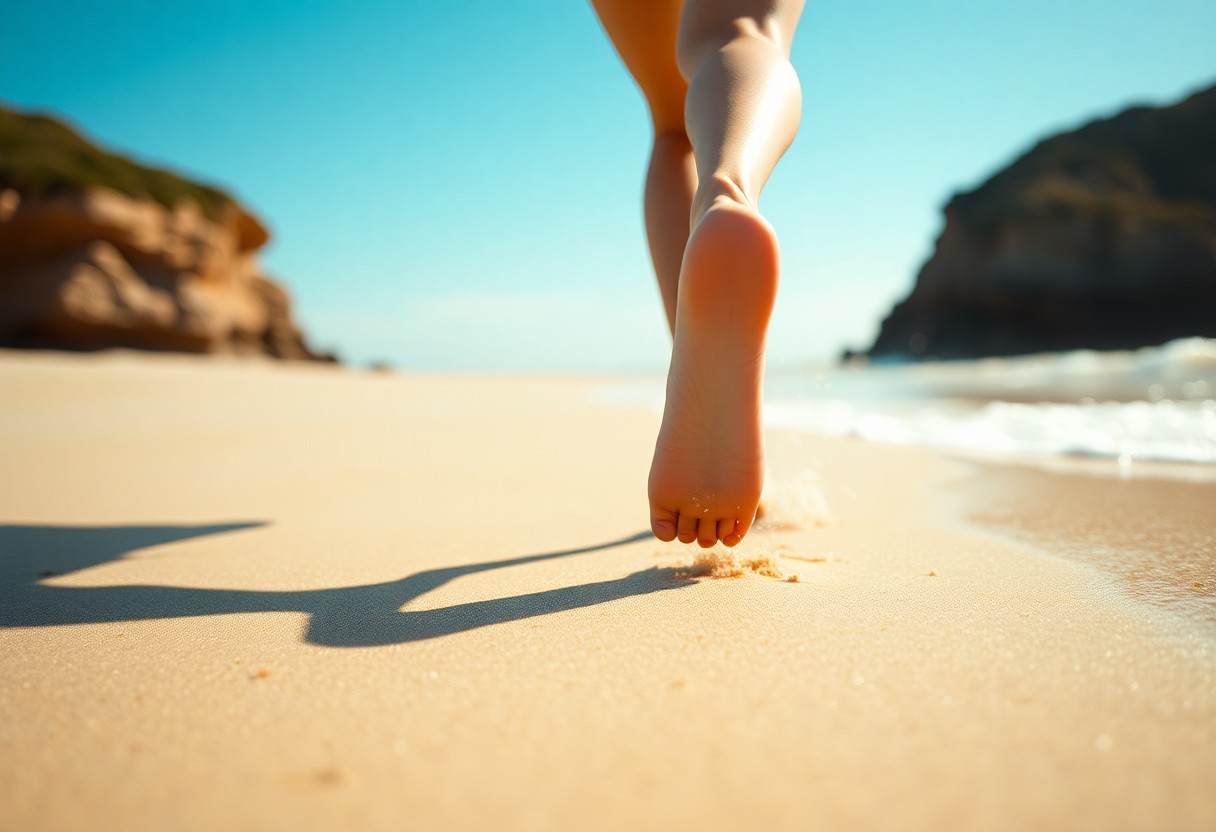
Unlock the Comprehensive Benefits of Barefoot Shoes for Superior Running
Barefoot shoes offer a multitude of advantages, including a more authentic running experience and improved foot strength. These benefits contribute to enhanced balance and stability, ultimately reducing the risk of injury and fostering confidence in your running.
Embrace Natural Foot Support with Barefoot Shoes
By allowing your feet to function as they were designed, barefoot shoes with minimal arch support assist in building foot strength and enable your feet to act as their own support system. This is vital for enhancing posture and relieving stress on joints during running.
Thin, Protective Soles for a Connected Running Experience
The thin, protective soles of barefoot shoes help maintain your connection with the ground, facilitating confident and powerful movements. With around 200,000 nerve endings in each foot, you can enhance your brain’s control over your body’s movements, resulting in better coordination and agility.
It’s essential to emphasize that the thin soles of barefoot shoes promote a more natural running experience. This design helps diminish the collision forces associated with conventional running shoes, which can lead to fewer injuries and improved overall running form. By experiencing the ground beneath you, you can adapt your movements more intuitively, enhancing your running journey.
Successfully Transitioning to Barefoot Shoes for Lasting Benefits
Your journey into barefoot running begins with selecting the right footwear, but it is crucial to do so thoughtfully to avoid any potential injuries. Understanding the benefits of barefoot shoes, which closely mimic the experience of running barefoot, will facilitate a seamless transition into this new running approach.
Embrace a Gradual Transition to Barefoot Running for Optimal Results
To initiate your transition, start by slowly increasing the duration you wear barefoot shoes. This gradual process allows your feet to adapt to the new movement while strengthening your foot muscles over time, ensuring a safe and effective transition.
Perfect Your Form for Long-Term Success in Barefoot Running
A key element of successful barefoot running lies in maintaining proper form. This includes landing mid-strike or fore-strike and avoiding overstriding, both of which can reduce the risk of injuries and enhance your overall running experience. Focusing on your form not only improves your efficiency but also makes your runs more enjoyable.
With the correct form, you can fully embrace the benefits of barefoot running, such as stronger feet and improved posture, while minimizing the risks associated with this running style, including joint stress. By prioritizing your form and gradually transitioning to barefoot shoes, you’ll set the stage for long-term success and a more enjoyable running experience.
Key Benefits of Barefoot Running: A Comprehensive Recap
With this detailed overview, you now have a solid grasp of the numerous advantages associated with barefoot running. By eliminating traditional footwear, you can enhance your foot strength, balance, and posture. With improved footstrike and minimized joint stress, you can embark on a more natural and fulfilling running journey. If running barefoot isn’t feasible for you, consider trying barefoot shoes to experience the benefits for yourself.
Your Most Pressing Questions Addressed: FAQ on Barefoot Running
Q: What benefits can I expect from barefoot running?
A: The advantages of barefoot running include strengthening your feet, ankles, and calves, improving balance and stability, and reducing the risk of injuries. It encourages a more natural movement pattern, which can enhance your posture and overall performance. Additionally, barefoot running helps alleviate joint stress and promotes a more natural footstrike.
Q: Is it possible to enjoy barefoot running benefits while wearing shoes?
A: Absolutely! You can experience the benefits of barefoot running by choosing barefoot shoes. These innovative shoes are designed to replicate the sensation of running barefoot while offering essential protection. They come with a natural-foot shape, zero-drop design, flexibility, and natural foot support, all of which can help improve your running form and decrease injury risks.
Q: What is the best approach to transition to barefoot running or barefoot shoes?
A: Transitioning to barefoot running or barefoot shoes requires a gradual approach. Start by incorporating barefoot shoes into your routine, slowly increasing the time you wear them. Focus on maintaining proper form and technique to ensure long-term success. Begin with short runs or walking sessions in barefoot shoes, and gradually extend the distance and intensity over time.
The Article The Surprising Benefits of Barefoot Running: Why You Should Give It a Try appeared first on My Shoes Finder
The Article Barefoot Running Benefits: Discover Why You Should Try It Was Found On https://limitsofstrategy.com





